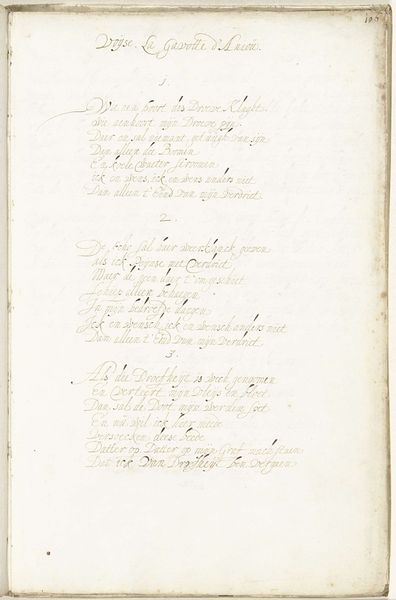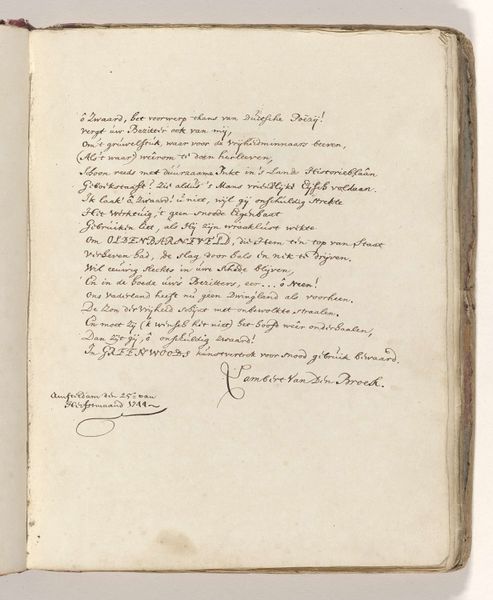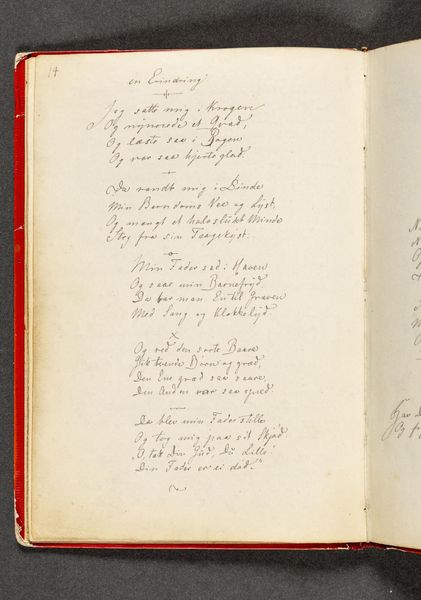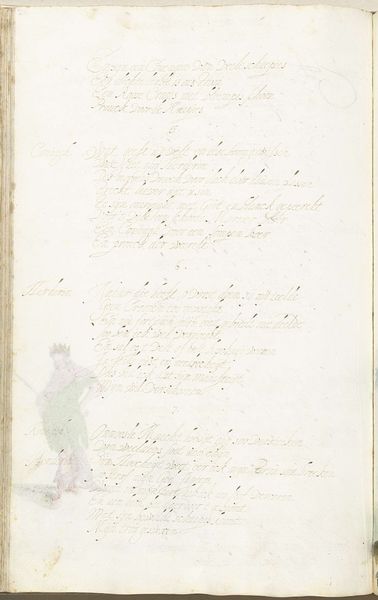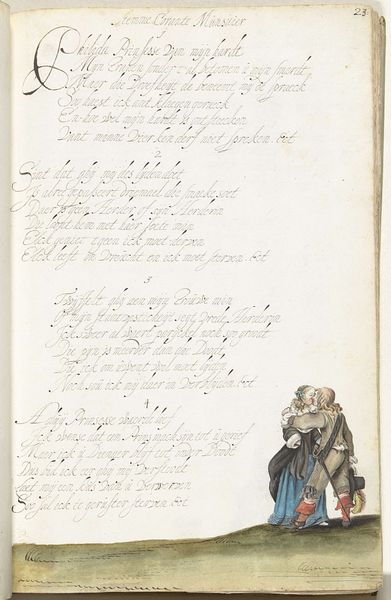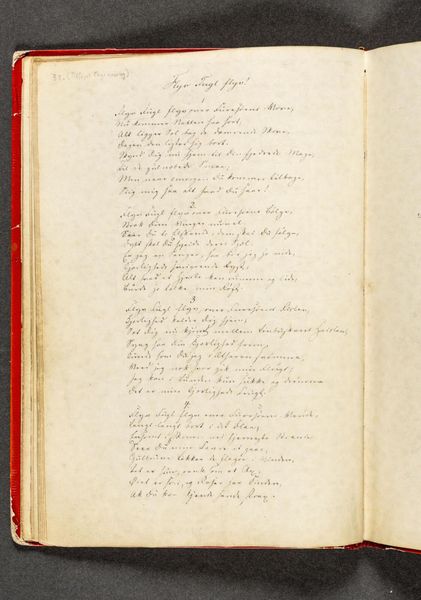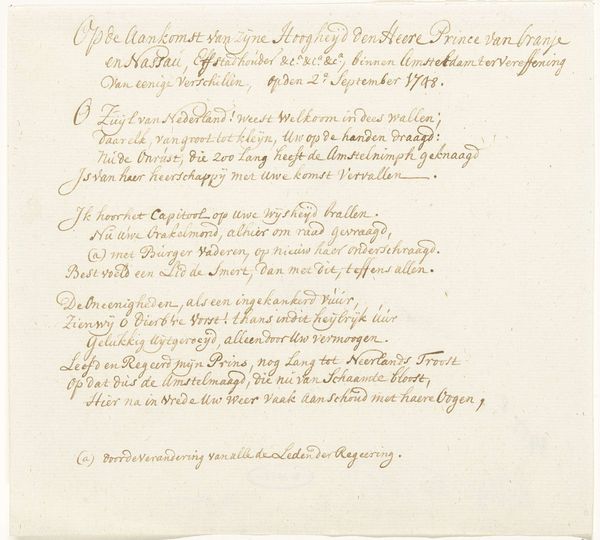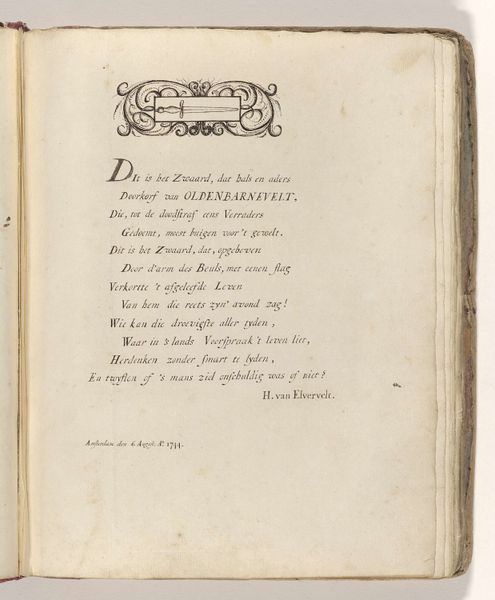
drawing, textile, paper, ink
#
portrait
#
drawing
#
aged paper
#
hand-lettering
#
dutch-golden-age
#
hand drawn type
#
hand lettering
#
textile
#
paper
#
personal sketchbook
#
ink
#
fading type
#
sketchbook drawing
#
watercolour illustration
#
sketchbook art
#
watercolor
#
calligraphy
Dimensions: height 313 mm, width 204 mm
Copyright: Rijks Museum: Open Domain
Editor: Here we have “Gedicht over liefdesverdriet,” a poem about lovesickness, made around 1660 by Gesina ter Borch. It’s ink on paper, a beautiful piece of calligraphy really. It gives me such a sense of intimacy, like peering into someone's private thoughts. What strikes you about it? Curator: It's true, there’s a compelling vulnerability to it, isn't there? Knowing Gesina, I see beyond neat calligraphy and a personal outpouring. To me, the "aged paper" element enhances a sense of memory and longing; you feel as though you are uncovering an almost secret artifact, which makes the emotional core even more resonant. Editor: That's so interesting. I hadn't considered the material itself as being so evocative. How much do you think the very act of writing by hand contributes to the artwork’s power? Curator: Enormously! This wasn't some cold, printed text. This was a painstakingly created document, each stroke infused with intention, hesitation, passion perhaps! Consider how carefully Ter Borch has chosen to present the text and arrange it on the page. Are the poem’s words reinforced through the visual aspects of this artifact? Editor: I can see that. The handwritten aspect makes it very personal and emotionally vulnerable in a way a printed version would never have. I think the imperfections in the hand-lettering adds character. Curator: Exactly! It pulls you in, doesn't it? Makes you feel closer to the artist’s soul. It transforms what would otherwise be an aesthetic and perhaps slightly inaccessible artwork into something very real. What is one aspect that we may lose if this work was reproduced, and not seen in person? Editor: Oh, definitely the texture and the aged quality of the paper. Seeing the actual physical object must deepen the connection. I think that’s true of so much art really. Curator: Precisely! And now we know just that much more, thanks to our little journey today.
Comments
No comments
Be the first to comment and join the conversation on the ultimate creative platform.
